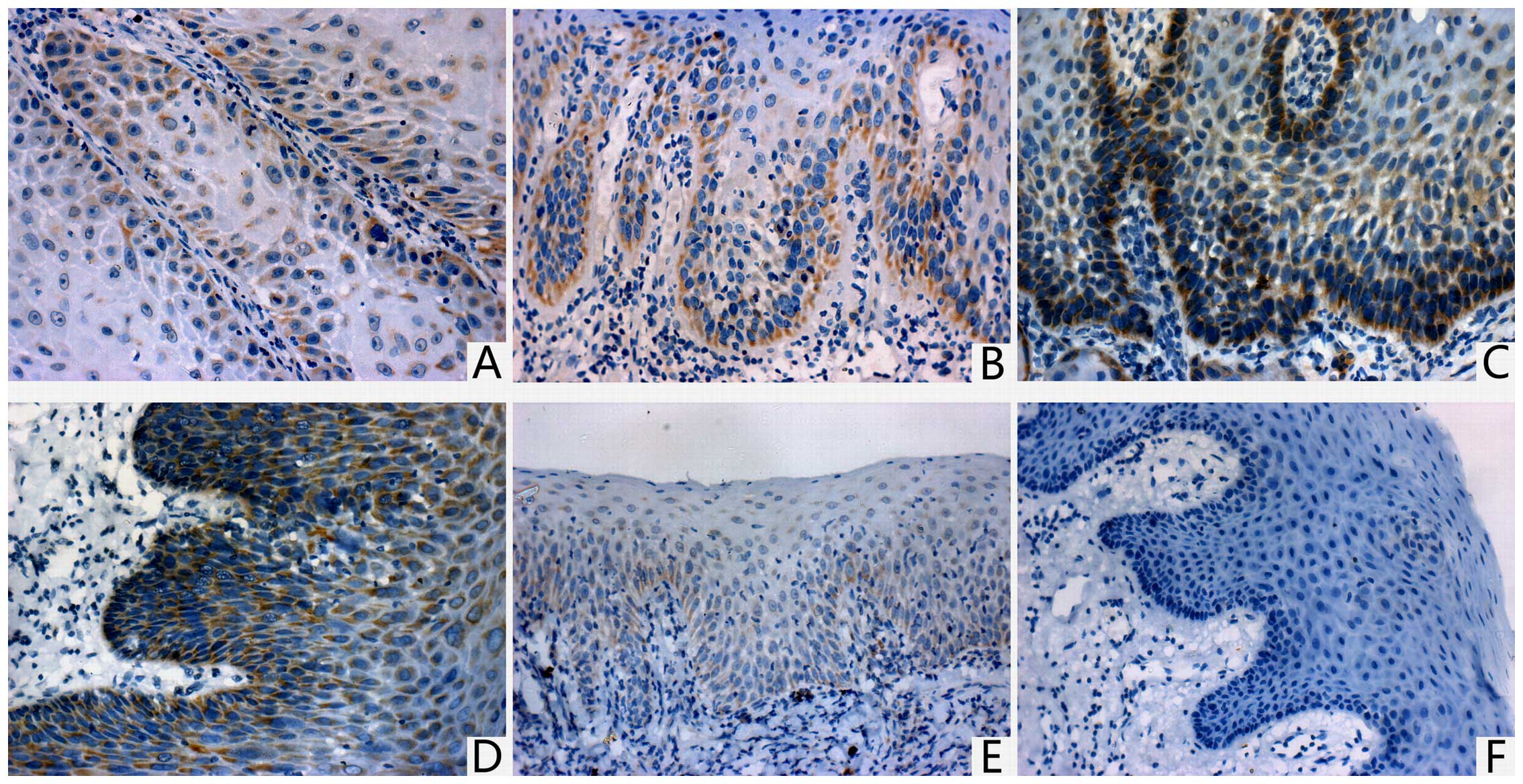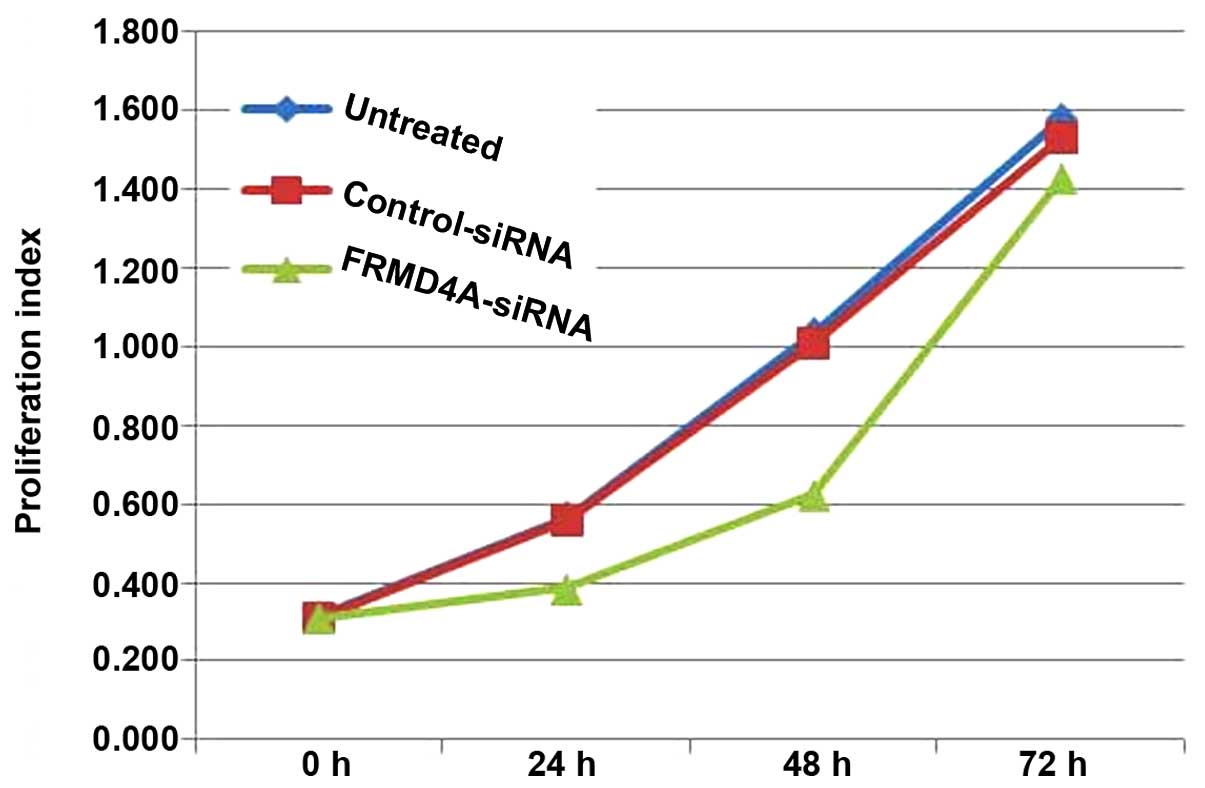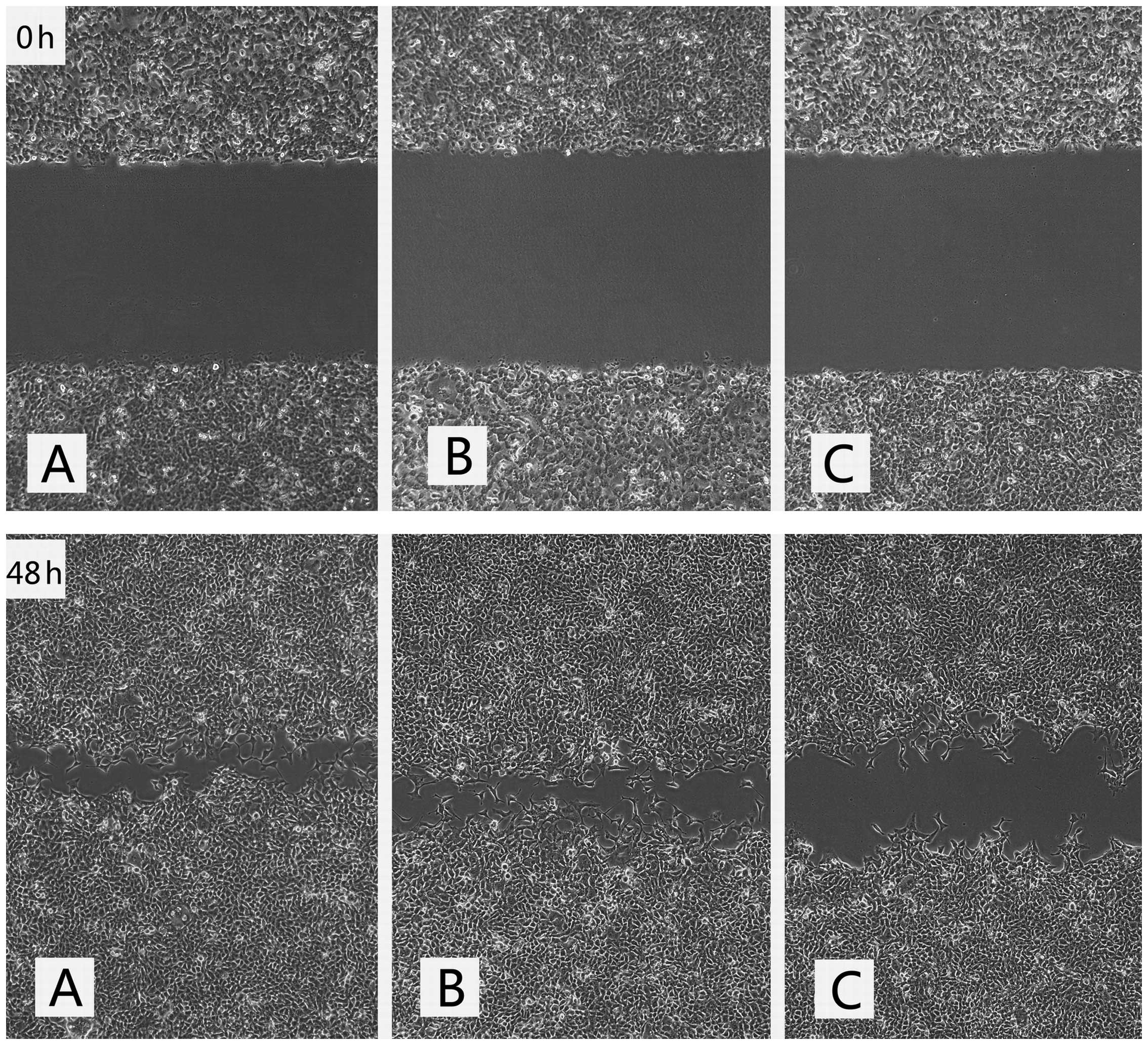FRMD4A: A potential therapeutic target for the treatment of tongue squamous cell carcinoma
- Authors:
- Published online on: September 21, 2016 https://doi.org/10.3892/ijmm.2016.2745
- Pages: 1443-1449
-
Copyright: © Zheng et al. This is an open access article distributed under the terms of Creative Commons Attribution License.
Metrics: Total
Views: 0 (Spandidos Publications: | PMC Statistics: )
Total PDF Downloads: 0 (Spandidos Publications: | PMC Statistics: )
Abstract
The aim of the present study was to identify agents capable of inhibiting the invasion and metastasis of tongue squamous cell carcinoma and thereby improve the outcomes of patients suffering from tongue cancer. FRMD4A antibodies were used to probe 78 paraffin-embedded specimens of tongue squamous cell carcinoma and 15 normal tongue tissues, which served as controls. Immunohistochemical methods were then used for analysis. Clinical pathological parameters were obtained, and the association between FRMD4A expression in the samples and the pathological parameters was analyzed. The human tongue cancer cell line CAL27 was used to study the effects of FRMD4A. CAL27 cells were transfected with small-interfering RNA against FRMD4A (FRMD4A-siRNA) and the mRNA and protein levels of FMRD4A were then evaluated by RT-qPCR and western blot analysis, respectively. The proliferation and cell-cycle assays of CAL27 cells were evaluated using the CCK8 method and flow cytometry. The invasion and migration of the cells were measured using a Matrigel invasion chamber and a scratch assay, respectively. The results showed FRMD4A overexpression in tongue squamous cell carcinoma, and the positive reaction was predominately located in the cytoplasm. Tumor clinical stage and lymph node metastasis showed a statistically significant correlation with FRMD4A expression. Transient silencing of the FRMD4A gene for 24 and 48 h significantly decreased the mRNA and protein expression of FRMD4A, respctively. Silencing FRMD4A gene reduced the proliferation of CAL27 cells and led to cell cycle arrest in the G1 phase, as well as significantly suppressing the migration and invasion capacity of CAL27 cells. The findings of the present study suggest that FRMD4A expression correlates with the development of tongue squamous cell carcinoma. For this reason, FRMD4A merits further study as it may be suitable for use as a therapeutic agent in antitumor treatment regimens.















